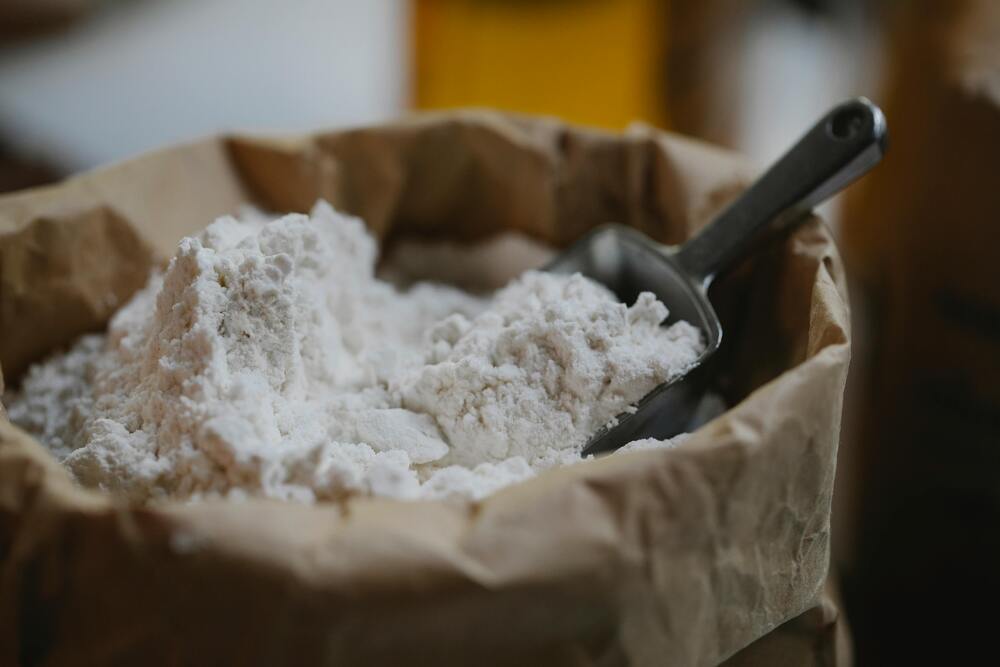A powder transfer system is essential in the total containment of powders or grains, effectively preventing airborne contaminants from entering the product stream and hazardous dust from escaping into the facility.
Such systems are crucial for businesses managing bulk materials, particularly in sensitive sectors like food manufacturing, where safety and contamination control are paramount. By ensuring precise and secure transfer, these systems directly impact final product quality, enhance risk management, and significantly contribute to overall facility safety and operational integrity.
Understanding Powder Transfer Systems (PTS) and Their Role
What is a Powder Transfer System?
A powder transfer system is an engineered solution that precisely moves powders and granules within a fully contained process. It prevents contamination and minimises material wastage to uphold stringent quality standards, making it a fundamental process for safeguarding product integrity. It is also vital for ensuring operator safety by containing airborne dust and protecting personnel from exposure to hazardous particulates.
How It Works
A pneumatic powder transfer system operates on a simple yet effective principle, typically involving four key stages:
- Loading: The process begins when powder is loaded into the source container or vessel.
- Vacuum Generation: A vacuum pump then creates a low-pressure environment within the conveying line.
- Powder Movement: This pressure differential between the source and the destination becomes the driving force, fluidising the powder and moving it efficiently through the enclosed pipeline.
- Discharge: Upon arrival, the powder is separated from the air stream and discharged into the designated container in a controlled and contained manner.
Methods for Transferring Powders Between Containers
Several methods exist for powder handling, each with distinct characteristics.
1. Manual Handling
The most basic powder transfer method involves using tools like scoops and shovels. However, this approach is prone to significant downsides, including product spillage, dust generation, and potential ergonomic safety risks for operators.
2. Mechanical Conveyors
Mechanical powder conveyor systems, such as belts, screws, or bucket conveyors, are more effective for moving large volumes. While functional, they often require intensive cleaning between batches to prevent cross-contamination and can still generate dust at transfer points.
3. Pneumatic Conveying
Pneumatic conveying moves powder through a sealed pipeline using air. This method provides superior containment and efficiency, making it an advanced solution for sensitive applications, such as handling powders and other food-grade materials. Unlike open mechanical systems, its fully enclosed nature virtually eliminates dust emissions, significantly enhancing workplace safety and protecting product purity from airborne contaminants.
Advantage of Pneumatic Conveying Systems in Powder Transfer
Other advantages of using pneumatic powder conveying systems for your manufacturing process include:
1. Efficient and Safe Vessel Charging
Pneumatic conveying systems enable solids to be added to vessels, such as mixers or reactors, without interrupting the process. Because the system is fully enclosed, it maintains a stable and safe environment, particularly when handling liquids or sensitive materials. Using pressure or vacuum, along with tools like rotary airlocks and injection lances, the system moves materials directly into the sealed vessel without exposing it to air or contamination.
2. Controlled and Variable Powder Transfer Rates
Pneumatic systems deliver a precise, metered addition of materials, which is essential for achieving the exact formulations required in industries like food production. This high degree of automation and control directly improves dissolution rates, leading to a significant reduction in overall batch processing time.
3. Reduced Solids Handling and Elimination of Hoists
Pneumatic conveying systems simplify the entire solids handling process by establishing a direct, enclosed path from the source to the receiving vessel. It eliminates intermediate mechanical stages and, most significantly, the reliance on cumbersome hoists or cranes for vertical lifting. By removing overhead equipment, the system reduces operational complexity. It also offers far greater flexibility to optimise equipment layouts and overcome architectural constraints.
Why Partner with Pneu Powders Systems for Your Powder Transfer System
Understanding the benefits of an advanced powder transfer system is the critical first step toward enhancing your facility’s safety, efficiency, and product quality. However, translating that knowledge into a reliable, high-performance system tailored to your specific facility requires in-depth technical expertise.
At Pneu Powders Systems, we specialise in designing and supplying bespoke pneumatic conveying solutions tailored to your specific operational needs. Our expertise in sophisticated powder handling systems and milk powder equipment, from concept to commissioning, ensures your facility achieves the highest standards of safety, hygiene, and efficiency.
Partner with us to develop a system that safeguards your product and streamlines your operations.





